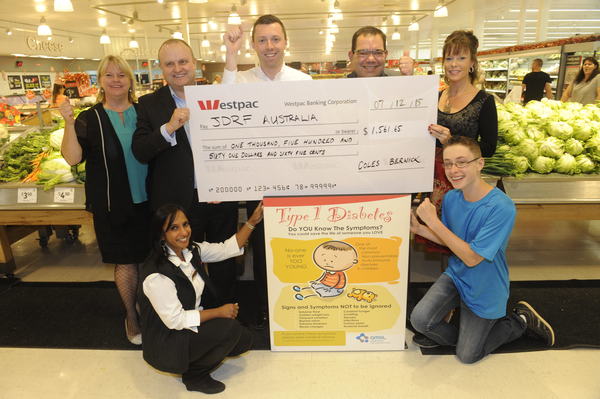By Rebecca Skilton
“You don’t need to worry about that because you only get type 1 diabetes when you eat too many lollies.”
Those were the words that motivated Berwick mother of two Deb Bayley, to take her mission in raising awareness about type 1 diabetes (T1D) to the next level.
It was an all-too-familiar misconception that was overheard by Deb while standing in a local Coles supermarket.
Collecting children’s colouring in pages that were used to raise awareness about type 1 diabetes, Deb watched on as a child spotted the colouring sheets and questioned their parent about one of Australia’s most chronic diseases in children.
“When I was collecting the artwork for this particular campaign, I overheard a customer talking to their child who wanted to know what type 1 diabetes was,” Deb explained.
“I heard (the parent’s reply) and I thought to myself; ’you know what, something has to be done because that’s what people are thinking, and it’s just not correct’.”
In actuality, the causes of type 1 diabetes are not entirely understood, and while genetic and environmental triggers are acknowledged to play a role, there are currently no known preventions or cures.
A lifelong autoimmune disease, type 1 diabetes terminates the body’s ability to produce insulin, and can lead to severe health complications such as kidney failure, blindness, nerve damage, amputation, heart attack, stroke and pregnancy complications.
Around 2400 people are diagnosed with type 1 diabetes every year, with the peak age range of diagnosis in Australia between 10 and 14 years.
Despite this, Deb’s experience with the disease struck slightly earlier.
Diagnosed at age two and half, Deb’s son Ryan has battled type 1 diabetes for 14 years. Now 16, Ryan has to manage insulin replacement as well as consistently monitoring his blood glucose levels around eight times a day, every day for the rest of his life.
“(Ryan) just has to get along with life … what can he do? All we can do is encourage him to be strong and support him because it will be like this for the rest of his life until there’s a cure,” Deb said. “There are no days off though, it’s 24/7.”
Following her colouring in sheet encounter and desperate to educate the general public, in 2015 Deb began her ‘T1D Cards for a Cure campaign.’
Just $2, the cards can be purchased at Coles supermarkets and contain a T1D fact sheet and card to be put on display at the supermarket. All funds raised by the campaign go to the Juvenile Diabetes Research Foundation (JDRF).
“This campaign started in 2015 when I sent through a proposal to Coles head office and shared my thoughts and ideas and it went from there,” Deb said.
“The campaign is reaching out to the public because we are finding it raises a lot of awareness and helps with the community to bring up the question of ‘what is T1D?’”
Receiving an overwhelming amount of support, Deb’s campaign has run annually since its conception and has so far raised $11,589.80.
“It’s beautiful to see the community getting on board,” Deb said. “This year there were 13 stores involved based around the City of Casey and Cardinia, with stores all the way out to Moe involved as well.”
Yet, as one of T1D’s Cards for a cure Facebook post highlights, the general public’s knowledge about this condition has a long way to go. Asking users what a public misconception about type 1 diabetes is that irritates them, the post received a number of common misunderstandings experienced by those affected by T1D.
‘That type 1 happens because of diet and that if I change my daughter’s diet she will grow out of it,’ one mother wrote.
‘It’s my fault my son is diabetic type 1 for not making him eat right,’ another user commented.
‘If I lost weight, I would be cured or at least have better control … I lost 30kg since diagnosed and 1: still have diabetes and 2: still struggle for control,’ a type 1 diabetic stated.
While disappointing to read, the general public’s misunderstanding of type 1 diabetes only spurs Deb’s crusade forward, with T1D education at the forefront of her mind. And while this year’s T1D Cards for a Cure campaign has come to an end, preparation for the 2018 campaign has already begun, with Deb’s goals seeing the movement break the Victorian borders.
“We have lots of requests from other states to take the campaign national, which is the ultimate goal, but for now we’re focusing on Victoria and what we can do here,” Deb said. “We’ll just do what we can and keep growing … everyone wants that cure and the best way to go about it is to support the cards or JDRF charity.”
To find out more about type 1 Diabetes Cards for a Cure, visit their Facebook page: T1D Cards for a Cure. For more information on the Juvenile Diabetes Research Foundation visit www.jdrf.org.au.








